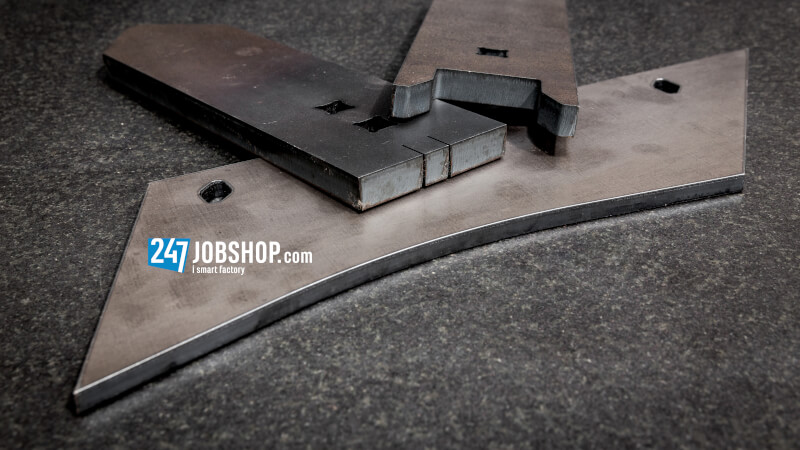Technologies
Laser cutting
LASER CUTTING ALWAYS FIRST IN METAL CUTTING
Among the best
Laser cutting is a very precise machining process in which materials are cut into the desired size and geometry thanks to a laser beam. In this process, the intensity of the light beam is concentrated on a very small area. The beam is so intense that it can cut.
We built our automated AMADA machinery with the latest cutting technologies to meet the highest customer needs. RABACSA metal technology has chosen AMADA group for sheet metal processing. We have found not only a machine supplier, but also common business philosophy. "Growing together with our customers" AMADA believes that providing value based on customer perspectives will strengthen the relationship and mutual trust between our customers and AMADA Group. We are committed to providing exceptional customer service from inquiry to production on a daily basis. AMADA's commitment is "Create Solutions for Your Success." Therefore, our innovative solutions are designed to provide new opportunities for our customers to grow with ever increasing efficiency and productivity.
The following types of laser cutting are used for cutting:
Laser cutting with oxygen: The focused laser beam heats the material to be cut to melting temperature. The energy density of CO2 is lower compared to fiber; for thicker steels, oxygen must be added to the combustion to release additional energy. This process is used for mild structural steels and copper.
Nitrogen laser cutting: The focused laser beam melts the material to be cut. The molten raw material is blown out of the cutting gap with high pressure and high purity nitrogen. Nitrogen cools the cut. This process applies to stainless steels, aluminum, brass, titanium and - up to a thickness of 10 mm - structural steels.
CO2 or Fiber Laser?
The most significant difference between the two technologies is the method of laser light generation and thus the wavelength of the laser beam. As a result of intensive technological development, the dominance of the fiber laser can be observed today. Fiber technology is much more energy efficient than the CO2 laser.
NEXT GENERATION LBC TECHNOLOGY FIBER LASER
PENDULUM LASER BEAM LBC technology moves the laser beam in specific patterns independent of the cutting head movement, providing optimal material melting. The result is a cutting speed that rivals more powerful fiber lasers. With LBC technology, the optimal beam pattern is always selected to quickly and effectively remove all melted material from the kerf
Main advantages:
- Higher cutting speed and accuracy
- Narrow cutting width, also for thicker metals
- Line-free cutting surface (for oxygen laser cutting)
- Very complex contours are possible
| Parameters | Values |
| Working range | Max. 2.000 x 4.000 mm |
| Material | Material thickness |
| Steel | 0,5 – 25,0 mm |
| Stainless steel | 0,5 – 25,0 mm |
| Aluminium | 0,5 – 25,0 mm |
| Brass | 0,5 – 18,0 mm |
| Copper | 0,5 – 12,0 mm |
| Titan | 0,5 – 15,0 mm |







